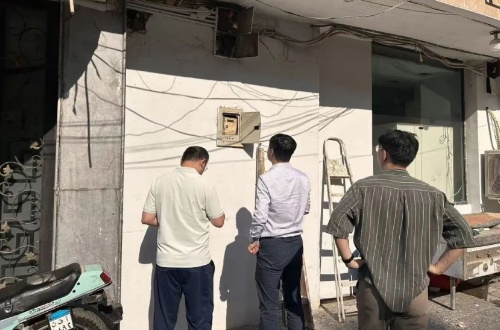Newest
-

LTG is about to be listed on BiFinance, the world's most fully licensed exchange, aiming to usher in a new chapter for the Bitcoin Depin ecosystem through the Lightning Network.
-

China Southern Power Grid's First Overseas Distribution Network Loss Reduction Pilot Project—the South Cairo, Egypt Project—has Successfully Passed Acceptance
-

AIX Incubator Secures U.S. SEC Filing Approval and MSB License, Advancing Its Global Compliance Strategy
-

RWA2035 Global Digital Economy Strategy Summit to Debut in Boao on January 4, 2026
Well spacing of CO2 flooding in low-permeability reservoir of Shengli Oilfield
 2021-12-13
2021-12-13
LI Jinzhi1
1. Oil and Gas Development Management Center, Shengli Oilfield Company, SINOPEC, Dongying 257001, Shandong Province, China
Abstract: Considering the complexity of optimizing well spacing with component numerical simulation and the insufficiency of capturing reservoir heterogeneity and crude-oil viscosity changing with space in CO2 flooding with conventional calculation methods of critical well spacing, the relationship between the threshold pressure gradient (TPG) and the air permeability of low-permeability reservoirs in Shengli Oilfield is obtained by regression through a large number of laboratory experiments. Based on the non-Darcy flow theory and considering the reservoir heterogeneity, the reduced viscosity of crude oil by CO2 flooding, convection, diffusion, and adsorption, a mathematical model of injector–producer pressure difference of line well pattern in CO2miscible flooding is established, and the methods for determining the critical flow well spacing and the reasonable production-well spacing are proposed. With a low-permeability reservoir in Shengli Oilfield taken as an example, the critical flow well spacing for CO2 miscible flooding is calculated. The results indicate that when the permeability increases to a certain value, the TPG stably decreases with the growth of permeability. When the apparent permeability decreases to a certain value, the TPG soars with the decline in permeability. For the low-permeability reservoirs in Shengli Oilfield, with the increase in the injector–producer pressure difference, the reasonable production-well spacing gradually rises, and the calculated reasonable production-well spacing is consistent with the actual injector–producer spacing, which verifies the reliability of the calculation method in this paper.
